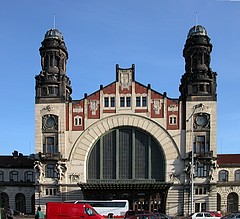
<p>155 years ago, architect Josef Fanta was born</p>
 |
| Photo: Brunswyk (wikipedia.org) |
Fanta also collaborated with other significant architects, including Josef Zítek and later Josef Schulz on the construction of the National Theatre in Prague, and with Schulz on the construction of the Rudolfinum and the National Museum. He assisted Antonín Wiehl in the realization of the famous Wiehl House on Wenceslas Square, participated in the construction of the Hlávka Houses on Vodičkova Street in Prague, and Hlávka's dormitory on Jenštejnská Street in Prague. From 1909 to 1922, Fanta served as a professor at the Czech Technical University, and in 1918 he was elected a member of the Czech Academy of Sciences and Arts.
During a scholarship stay in Italy, Fanta created a series of drawings and was also the author of several publications, including the work "On the Peculiarities of Costume and Housing." He was also dedicated to the protection and reconstruction of historical monuments, such as the dean's church in Klatovy, St. Wenceslas Church in Zderaz, and the ancient brewing house U Vejvodů in Prague. Josef Fanta died on June 20, 1954, in Prague.
The English translation is powered by AI tool. Switch to Czech to view the original text source.
0 comments
add comment












